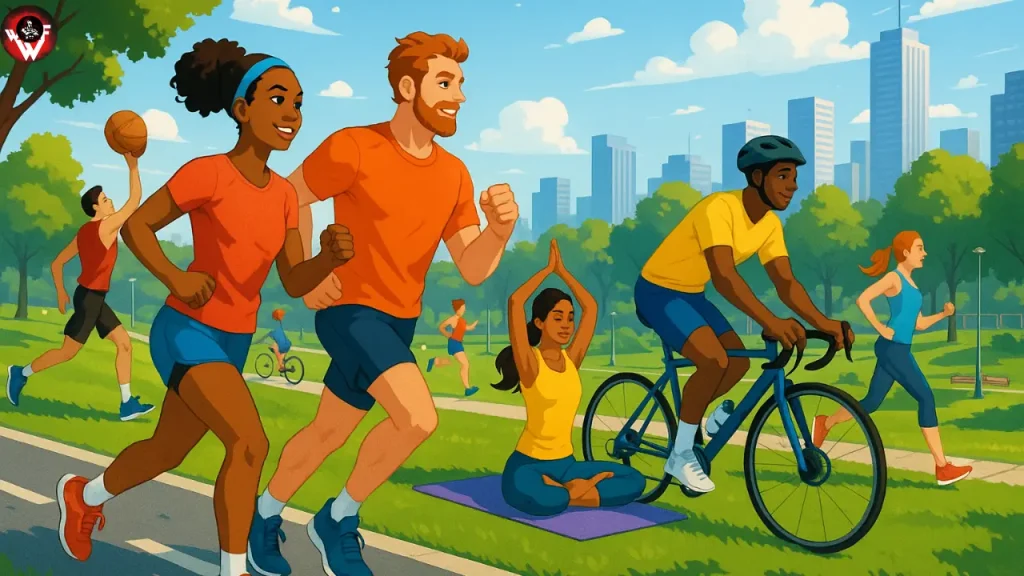
Cooking oils are a kitchen essential, but not all oils are created equal. With a growing focus on nutrition and heart health, many people are questioning the long-term safety of the oils they use daily—especially canola oil and soybean oil, two of the most commonly used vegetable oils around the world. Despite being plant-based, these oils have stirred debate due to their processing methods, fatty acid profiles, and potential health risks.
In this comprehensive article, we’ll explore the real health risks of canola oil vs soy oil, based on updated scientific research, expert opinions, and real-world dietary impacts. Whether you’re cooking for a family or making dietary choices for your health, this guide will help you make an informed decision.
Canola Oil: Overview and Composition
Canola oil is derived from the canola plant, a variety of rapeseed bred to remove harmful erucic acid. It is prized for its light flavor, high smoke point, and low saturated fat content.
Nutritional Profile of Canola Oil (per tablespoon):
- Calories: ~120
- Total fat: 14g
- Saturated fat: 1g
- Monounsaturated fat: 9g
- Polyunsaturated fat: 4g (mostly omega-6 and some omega-3)
- Omega-3: ~1.3g (ALA – alpha-linolenic acid)
Key benefit: Canola oil is relatively high in omega-3 fatty acids, which have heart-protective benefits.
Soybean Oil: Overview and Composition
Soybean oil is extracted from soybeans, often through solvent extraction using hexane, then refined and deodorized. It is widely used in processed foods and frying.
Nutritional Profile of Soybean Oil (per tablespoon):
- Calories: ~120
- Total fat: 14g
- Saturated fat: 2g
- Monounsaturated fat: 3g
- Polyunsaturated fat: 9g (rich in omega-6, less in omega-3)
- Omega-3: ~0.9g
- Omega-6: ~7.4g
Key benefit: It contains some plant sterols and vitamin K but is much higher in omega-6 than omega-3.
The Controversy: Are These Oils Actually Safe?
The safety of vegetable oils like canola and soy oil is hotly debated, especially due to:
- High levels of omega-6 fatty acids
- Use of chemical solvents
- Genetically modified organisms (GMOs)
- Oxidative instability when heated
- Potential links to inflammation and chronic disease
Let’s break down each concern for both oils.
1. Omega-6 to Omega-3 Ratio: Inflammation Risk
Canola Oil:
- Omega-6 to omega-3 ratio: ~2:1
- This is considered favorable compared to many other oils.
Soybean Oil:
- Omega-6 to omega-3 ratio: ~8:1
- This imbalance may contribute to systemic inflammation when consumed in excess, particularly in modern Western diets already high in omega-6.
Scientific Insight:
A 2020 study published in Cell found that diets high in omega-6 (especially linoleic acid) without sufficient omega-3s can disrupt gut-brain signaling, increase inflammation, and may even be linked to obesity and neurodegenerative diseases.
Winner: Canola Oil
2. Processing & Refinement
Both oils undergo refining, bleaching, and deodorizing (RBD process), which can degrade nutrients and generate harmful by-products.
- Canola Oil is often cold-pressed in premium variants but typically involves heat and chemical processing in bulk.
- Soybean Oil almost always involves hexane extraction, raising concerns about chemical residue (although studies show minimal residue remains post-processing).
Health Concern:
Processing leads to oxidation of polyunsaturated fats, creating trans fats and aldehydes which may damage cells, DNA, and contribute to chronic diseases like cardiovascular disease and cancer.
Winner: Neither—both are refined, but cold-pressed canola is slightly better.
3. GMO Content & Pesticide Residue
- Over 90% of soybeans and canola crops in the U.S. are genetically modified.
- GMO crops often go hand-in-hand with glyphosate-based pesticides, which are linked to endocrine disruption, gut microbiome imbalance, and possible carcinogenicity.
Certified Organic Oils:
To minimize risks, choose non-GMO and organic certified oils, which are tested for glyphosate and other chemical residues.
Winner: Tie (unless non-GMO/organic versions are chosen)
4. Trans Fats & Heating Stability
Although labeled “zero trans fat”, canola and soybean oils can form trace trans fats during high-heat cooking and processing.
Heating Stability:
- Canola Oil: Smoke point ~400°F. Moderate oxidative stability.
- Soy Oil: Smoke point ~450°F. Less stable due to high omega-6 content.
Repeated heating (such as in restaurants) increases toxic compound formation like acrolein and aldehydes.
Winner: Canola (slightly more stable under normal cooking conditions)
5. Impact on Heart Health
Canola Oil:
- Low in saturated fat
- Contains ALA (omega-3), which may reduce the risk of cardiovascular disease
- AHA (American Heart Association) considers it heart-friendly in moderation
Soybean Oil:
- Contains plant sterols that can lower LDL cholesterol
- However, excess omega-6 may counteract cardiovascular benefits
Scientific Findings:
A 2018 meta-analysis in The British Medical Journal found replacing saturated fats with polyunsaturated fats (PUFAs) like those in canola and soybean oil reduces heart disease risk, but only when omega-3 intake is adequate.
Winner: Canola Oil
6. Neurological and Metabolic Effects
Canola Oil:
- A 2017 study in Scientific Reports found memory impairment and weight gain in mice fed canola oil diets.
Soybean Oil:
- A 2020 study at UC Riverside found soybean oil affects genes in the brain linked to conditions like autism, Alzheimer’s, and depression—even independent of obesity.
Both oils may negatively influence cognitive health and metabolic function when consumed excessively or as primary fat sources.
Winner: Neither — moderation is key.
Real-World Use: Which Oil Should You Choose?
| Category | Canola Oil | Soybean Oil |
| Omega-3 Content | Higher (ALA-rich) | Lower |
| Omega-6 Content | Moderate | Very High |
| Inflammation Potential | Lower | Higher |
| Processing Method | Often refined | Highly refined |
| GMO Content | High unless organic | Very high |
| Cooking Suitability | Good for most uses | Better for high heat |
| Health Concerns (Long-Term) | Mild-moderate | Moderate-severe |
| Best Used For | Light sauté, baking | Deep frying, industrial |
Expert Tips: How to Use Oils Wisely
- Rotate Oils
Don’t rely on one oil. Use olive oil, avocado oil, ghee, and cold-pressed coconut oil to diversify fats. - Watch Total Omega-6 Intake
Avoid excessive processed and fried foods that sneak in soybean oil. - Read Labels Carefully
Many “vegetable oils” are just soy or canola. Look for cold-pressed, organic, and non-GMO labels. - Use Oils with Antioxidants
Pair oils with antioxidant-rich spices like turmeric, rosemary, or black pepper to reduce oxidative damage. - Avoid Reusing Oils
Never reuse fried oil, especially with soy or canola—it accelerates toxin formation.
Final Verdict: Which Is Healthier?
When comparing canola oil vs soy oil, canola oil comes out as the slightly healthier option, particularly when:
- It is cold-pressed or organic
- You consume it in moderation
- Balanced with other fat sources
Soybean oil, while widely used, poses greater risks due to:
- High omega-6 content
- Genetic modification
- Negative effects on inflammation and metabolism when overused
Key Takeaway:
Both oils should be used sparingly and strategically. For best health, focus on whole food fats, such as nuts, seeds, avocados, and fatty fish, while limiting processed oils in general.
FAQs: Canola vs Soy Oil
Q1: Is canola oil better than soybean oil for cholesterol?
Yes, canola oil is generally better for improving lipid profiles due to its higher omega-3 and lower saturated fat content.
Q2: Can either oil cause cancer?
When overheated or reused, both can form carcinogenic compounds, but there’s no direct link to cancer when used correctly in moderation.
Q3: Which oil is better for weight loss?
Canola oil may support weight loss better than soy oil due to lower inflammation and higher omega-3 content.
Conclusion
Understanding the real health risks of canola oil vs soy oil allows you to make smarter decisions in the kitchen. While neither oil is perfect, canola oil is the safer bet, especially when choosing non-GMO, cold-pressed varieties. However, the best approach is variety and moderation. No single oil is a magic bullet—or a poison. Balance is key.
If you found this article helpful, share it with someone who needs to clean up their cooking oils—and protect their long-term health.



